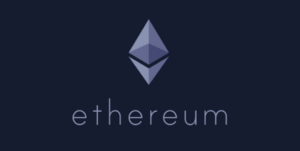XRP Attorney Reveals Gensler’s Double Standards: Meets with FTX’s SBF But Avoids…

A legal representative advocating for the cryptocurrency XRP has brought attention to what he perceives as inconsistent treatment by Gary Gensler, the chairman of the U.S. Securities and Exchange Commission. The lawyer, John Deaton, highlighted a situation where Gensler met with the CEO of FTX, Sam Bankman-Fried, while allegedly avoiding engagement with the leadership team at Ripple, the company behind XRP.
Deaton’s assertion revolves around the notion that Gensler displayed a double standard by engaging with Bankman-Fried, who heads a major cryptocurrency exchange, while seemingly sidelining Ripple’s executives. This observation has raised questions about the SEC’s approach to different players within the crypto industry.
The interaction between Gensler and Bankman-Fried, as noted by Deaton, contrasts with the SEC’s ongoing legal battle against Ripple. The SEC filed a lawsuit against Ripple Labs and its key figures in December 2020, alleging that XRP, the digital asset associated with Ripple, was sold as an unregistered security. This legal action has been a focal point in the crypto community, with many closely monitoring the developments and implications for XRP and the broader cryptocurrency market.
Deaton’s scrutiny of Gensler’s interactions underscores the complexities and nuances surrounding regulatory oversight in the crypto space. The evolving landscape of digital assets, including XRP, has prompted regulatory bodies like the SEC to navigate a challenging terrain where traditional frameworks may not seamlessly apply.
The debate sparked by Deaton’s observations reflects broader discussions within the crypto community about regulatory clarity and consistency. As cryptocurrencies continue to gain mainstream attention and adoption, the regulatory environment plays a crucial role in shaping the industry’s trajectory.
The dynamics between regulators, industry participants, and advocates like Deaton shed light on the diverse perspectives and interests at play in the crypto ecosystem. The intersection of innovation, compliance, and investor protection remains a key focal point for stakeholders seeking to establish a balanced and sustainable framework for the future of digital assets.
In conclusion, Deaton’s critique of Gensler’s alleged double standards underscores the ongoing dialogue surrounding regulatory approaches to cryptocurrencies like XRP. The interactions between regulators and industry stakeholders reflect the broader evolution of the crypto landscape, highlighting the need for clarity, consistency, and collaboration in shaping the industry’s path forward.



